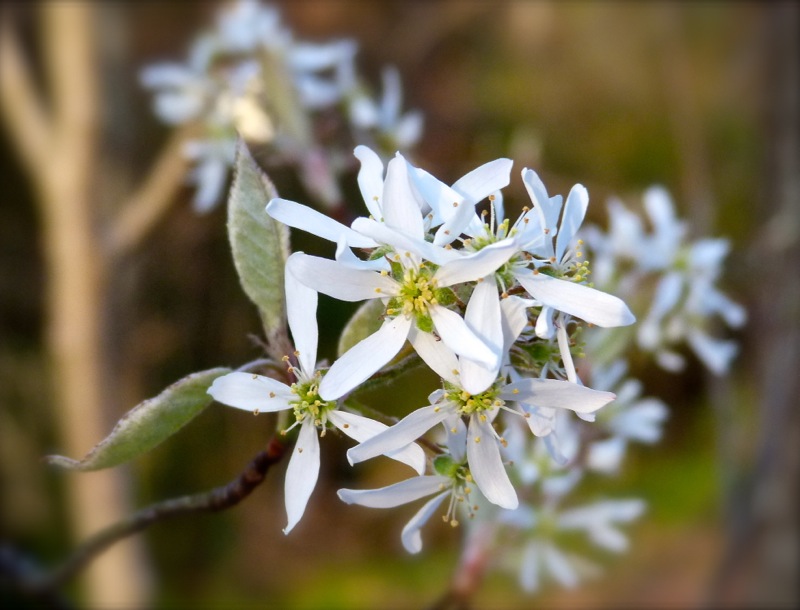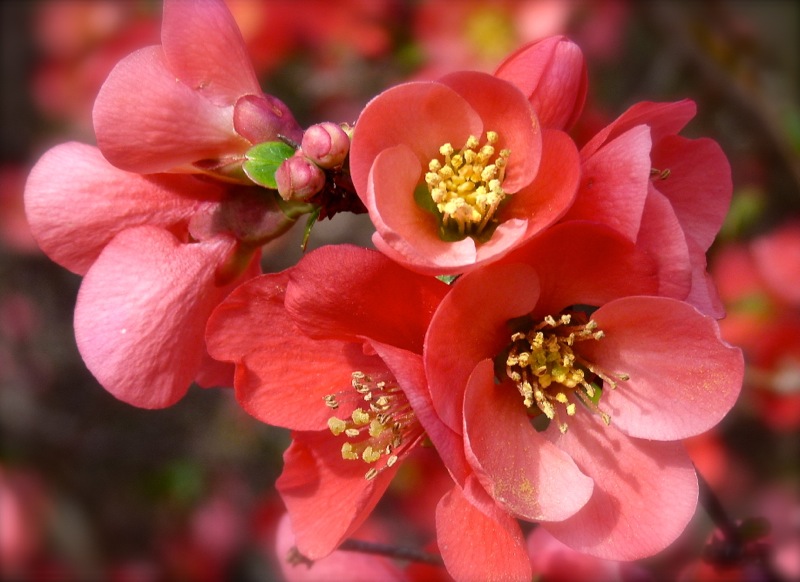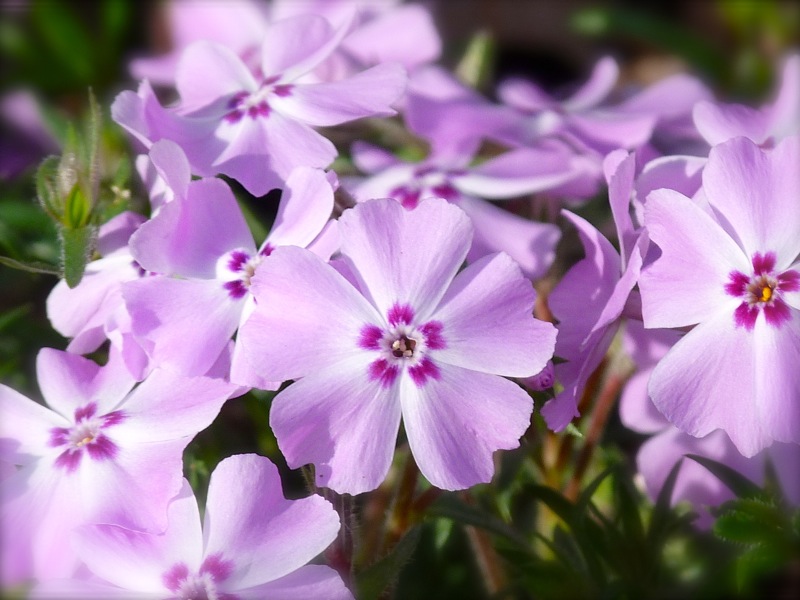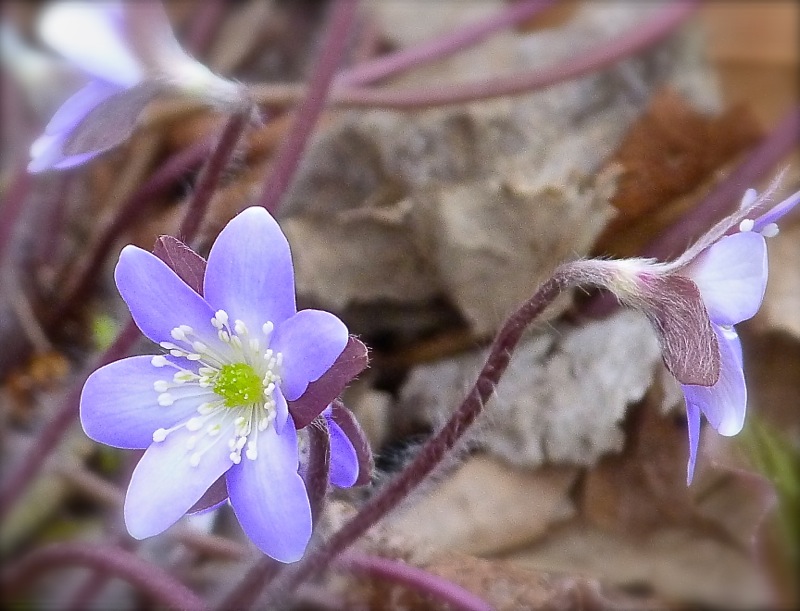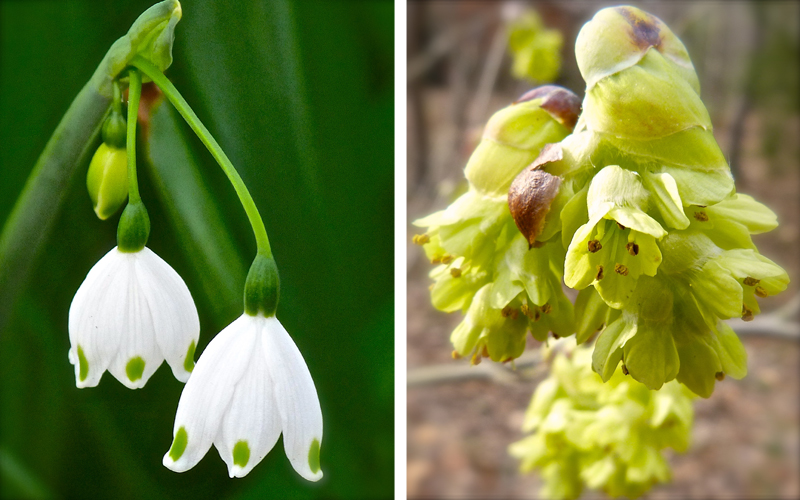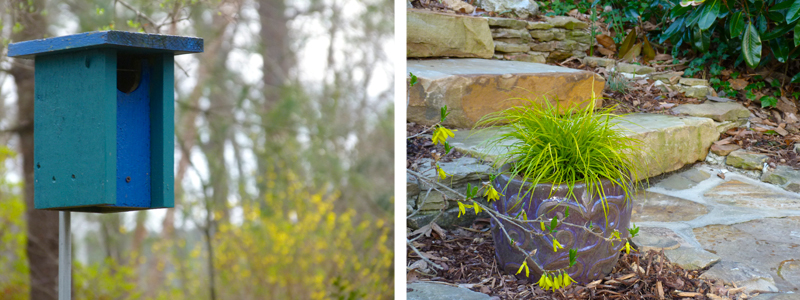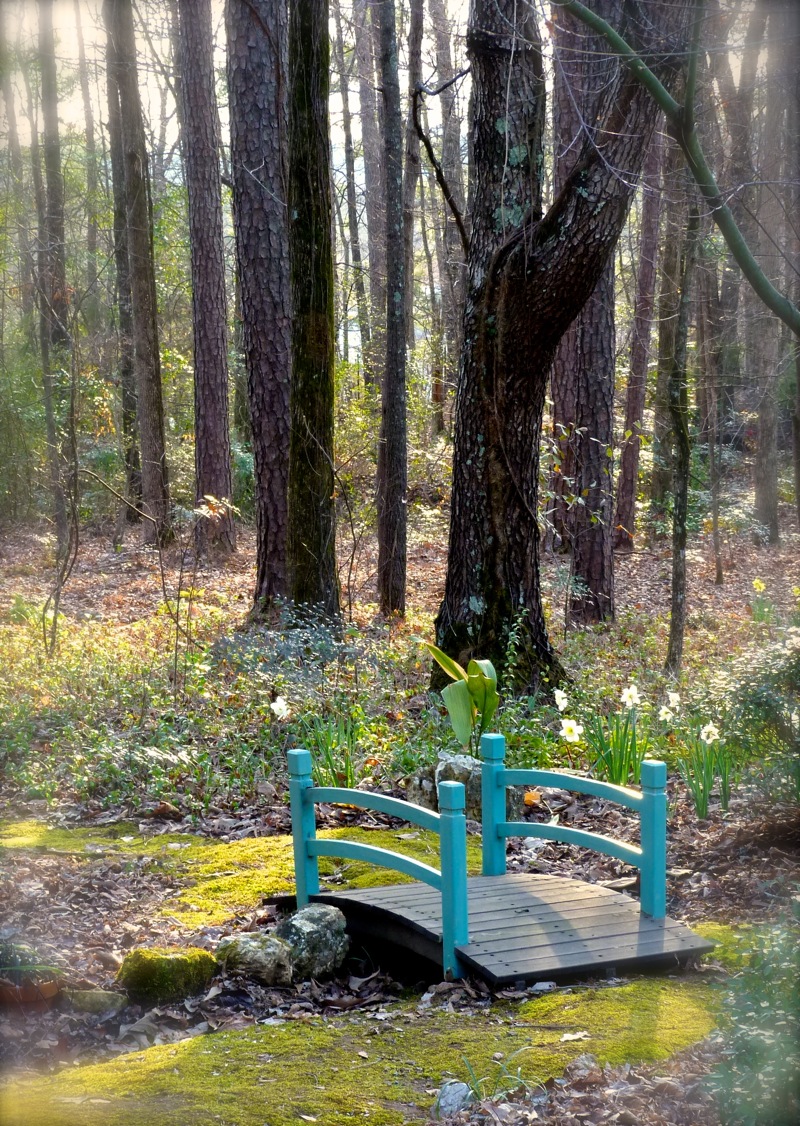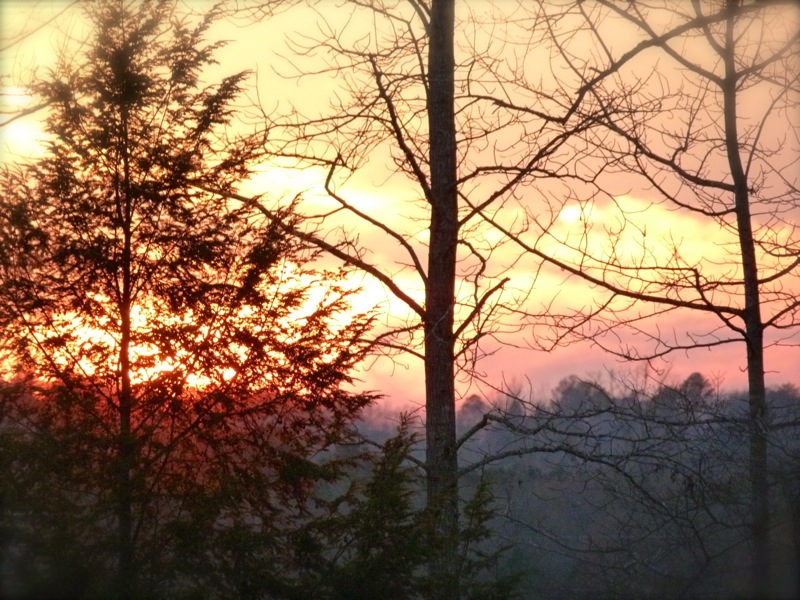Early Spring, 2015
 Sunday, March 22, 2015 at 3:10PM
Sunday, March 22, 2015 at 3:10PM It happens every year, but I greet the arrival of spring with the delight of an infant who has never seen a blossom before. The garden is awakening. I wander along damp mossy paths, smiling at each swelling flower bud and each lime-green leaf that unfurls. The light is gentle, the breeze is energizing, and the air is filled with chirps and chatters and trills and calls. There is a mockingbird in a tree, and his incessant happy song declares the wonders of season.
Many limbs and branches are still bare, and on a rainy day the land looks as cheerless as any winter day; but not for long, as every morning adds new color to the landscape. Forsythia was late blooming this year, put off by freezes, but at last it opened its cheery yellow bells: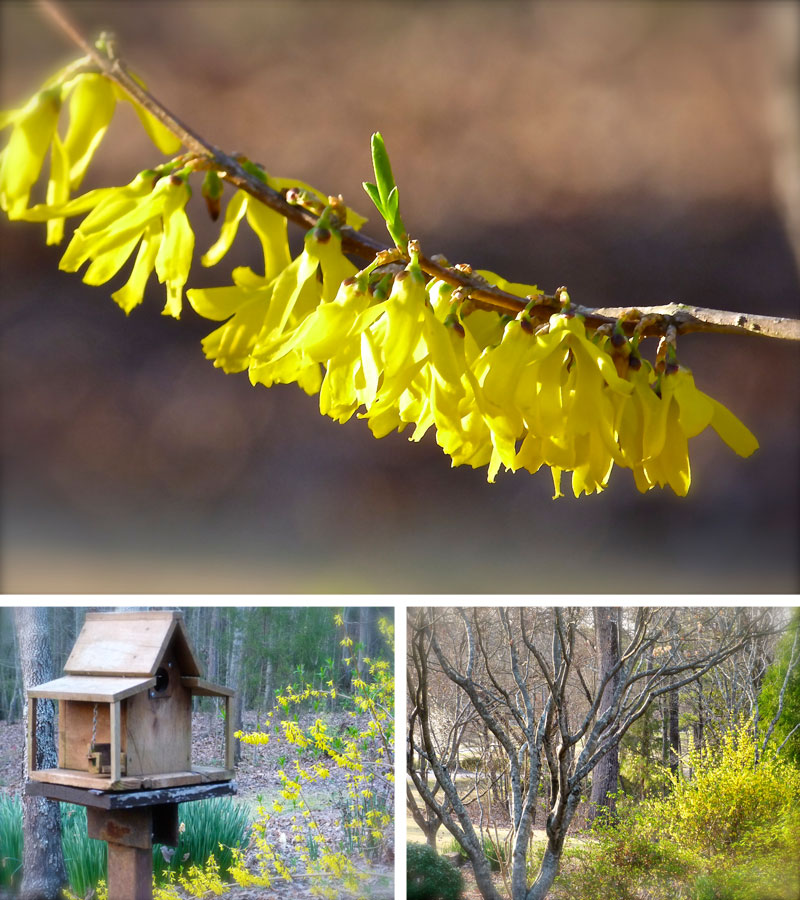
Chaenomeles, or flowering quince, bloomed through the hard freezes and continues to be beautiful: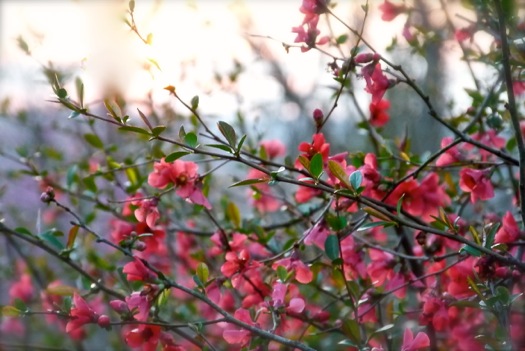
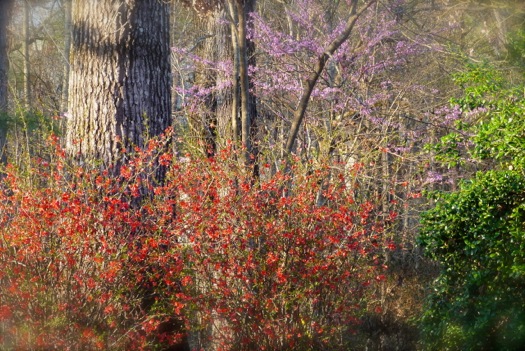
Corylopsis spicata, called winterhazel, is a plant in the witch hazel family, or Hamamelidaceae. Its clusters of yellow flowers hang on bare branches and glow like little lanterns: Fothergilla is one of my favorite native shrubs. I recently planted several new ones near the base of some river birch trees. This variety is called 'Redneck Nation,' after Fred Nation, the botanist who found it growing in south Alabama. My new shrubs look sparse now, but they will soon grow and be filled with foliage. The fragrant, white bottlebrush blooms are just beginning to open:
Fothergilla is one of my favorite native shrubs. I recently planted several new ones near the base of some river birch trees. This variety is called 'Redneck Nation,' after Fred Nation, the botanist who found it growing in south Alabama. My new shrubs look sparse now, but they will soon grow and be filled with foliage. The fragrant, white bottlebrush blooms are just beginning to open:
My daffodils were a bit disappointing this year. They bloomed just in time to be hit by severe frost, then weeks of rain. They lay low to the ground during most of this time, but bravely stood tall when the sun was shining:
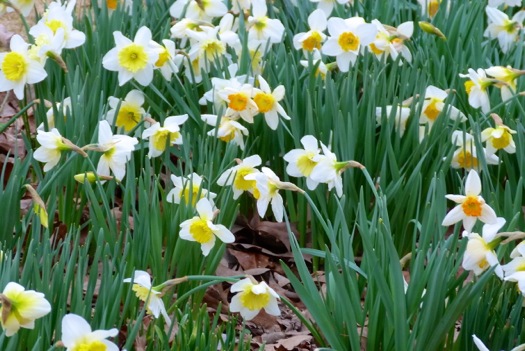
These trilliums grow wild in my woodland garden. The deep maroon petals in the center have not yet opened:
Hepatica nobilis, also called liverwort, is a beautiful woodland wildflower. I planted these next to a path, so I can appreciate its small, delicate blooms: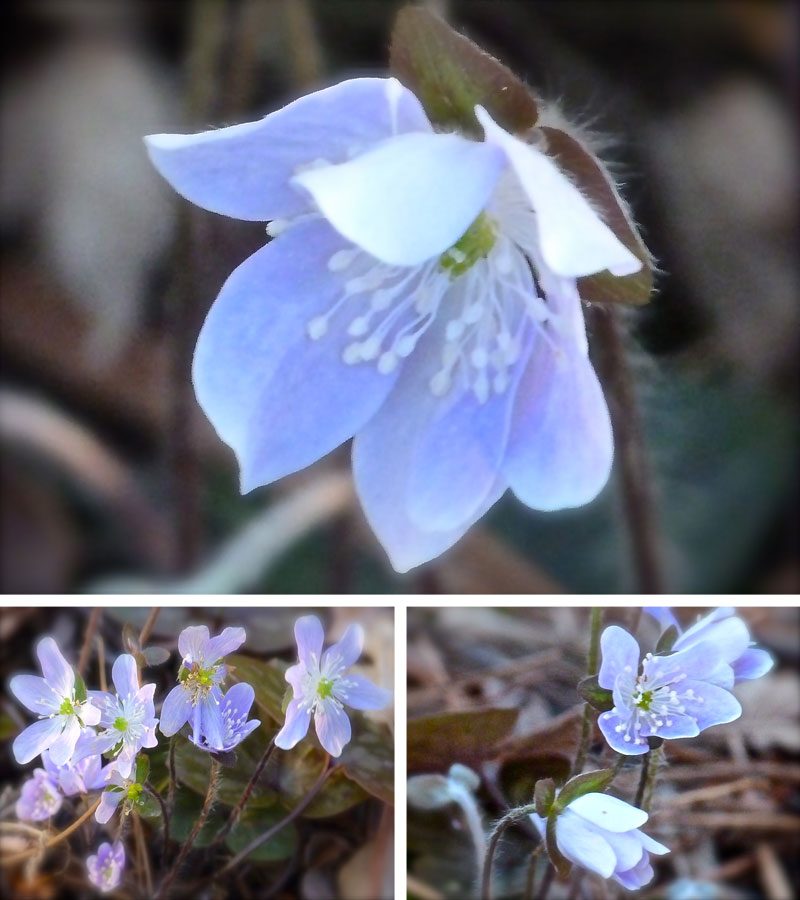
Another spring wildflower in my woodland garden is Sanguinaria, also called bloodroot. It has taken a long time to become established; the first couple of years I thought it had died! I am glad to see several blooms this year. It is shown on the upper right in this collage of spring bloomers: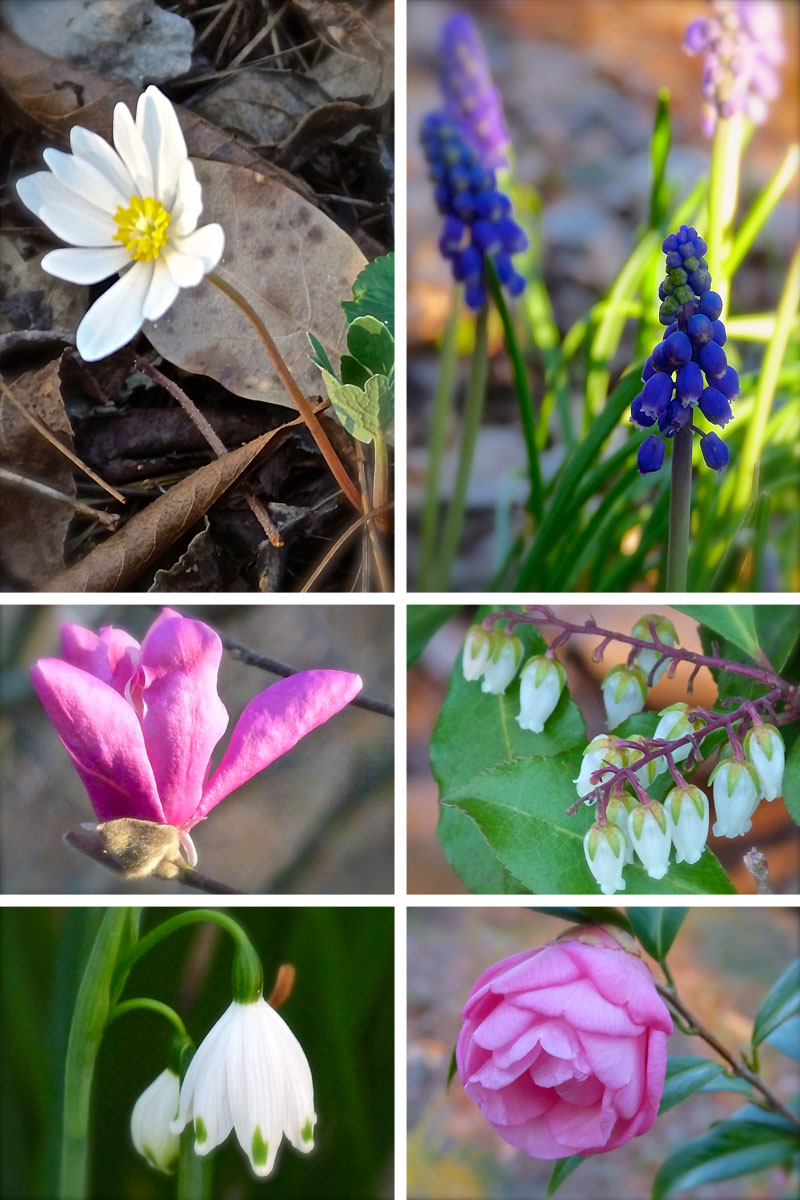 Clockwise from upper left: Sanguinaria, also called bloodroot; Grape Hyacinths; Pieris japonica, also called andromeda; Camellia 'Taylor's Perfection'; Leucojum aestivum, also called summer snowflake, although it blooms in spring; Magnolia 'Jane.'I am just as pleased with beautiful foliage as I am with flowers. Strawberry begonia and Heucerella 'Alabama Sunrise' are two new additions to my woodland garden:
Clockwise from upper left: Sanguinaria, also called bloodroot; Grape Hyacinths; Pieris japonica, also called andromeda; Camellia 'Taylor's Perfection'; Leucojum aestivum, also called summer snowflake, although it blooms in spring; Magnolia 'Jane.'I am just as pleased with beautiful foliage as I am with flowers. Strawberry begonia and Heucerella 'Alabama Sunrise' are two new additions to my woodland garden:  Strawberry begonia is a vigorous ground cover.
Strawberry begonia is a vigorous ground cover.
 Heucerella 'Alabama Sunrise' is a cross between Heuchera and Tierella. Throughout the year, life continues in the decaying crevices of Stump World:
Heucerella 'Alabama Sunrise' is a cross between Heuchera and Tierella. Throughout the year, life continues in the decaying crevices of Stump World: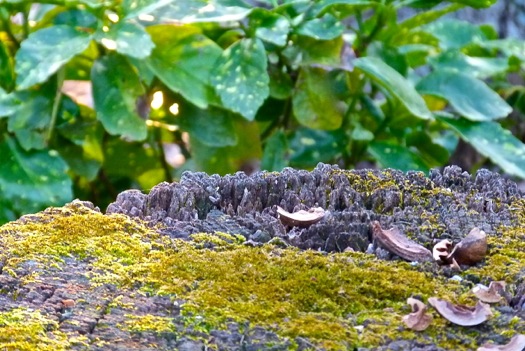
On a fallen log I find a surprisingly beautiful arrangement of lichens, which have flourished in abundant rain:
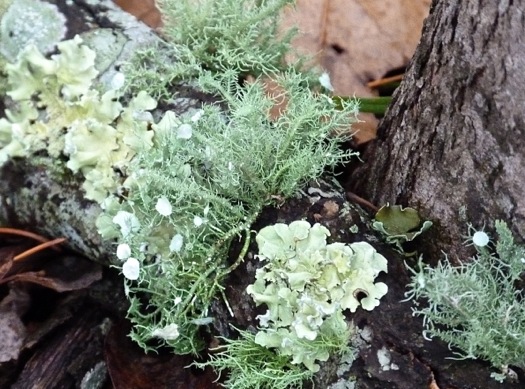
As day's end approaches, I find these blooms silhouetted against the sky:
 The woods still look bare in evening's glow, but tomorrow more buds will open and more color will show. Spring is here!
The woods still look bare in evening's glow, but tomorrow more buds will open and more color will show. Spring is here!

